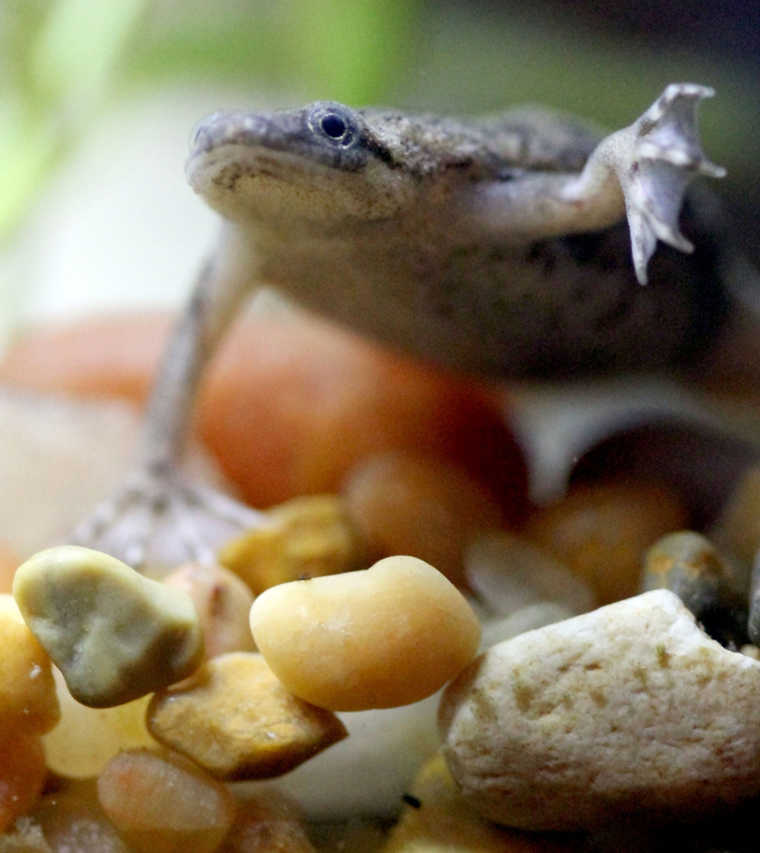OWENSBORO, Ky. (AP) — Samantha Lester did not become a breeder of small amphibious frogs by choice.
“When my niece was in the fourth grade, she chose dwarf frogs as her science project, and when it was over, she volunteered me to take them,” Lester said.
In two years, the science subjects have produced 50 frogs. Lester kept two of them. She has identical tanks on matching bedside tables in her bedroom for the original pair and for two of their offspring. She has decorated them with plants and small clay pots turned on their side where the little swimmers hang out during the day.
The creatures are nocturnal, and most of their activities occur when the sun goes down.
“The males sing at night,” Lester said. They make a chirping sound, which is a mating call, she said.
“They are extremely friendly and will come out for food,” Lester said. She lost her first tadpoles because she didn’t feed them live food.
“I didn’t think it was right to feed them something that was living,” Lester said. They are supposed to be fed brine shrimp eggs, also called sea monkeys.
African tadpoles are needy for the first two months, Lester said. They have to be fed around the clock.
When she has newborns, she has to get a babysitter if she leaves for any length of time, she said. Mature dwarf frogs are about 2 inches long.
The tiny spotted frogs have become popular, said Erin Marksberry, animal curator at Pet Food Center on south Frederica Street.
“We’ll be getting a shipment of 12 to 24 on Thursday,” Marksberry said. They’re fun to watch, she said.
One of their maneuvers is frog dancing, Lester said. They glide from one side of the tank to the other. “All they need is a top hat,” she said.
“They’re pretty cool and quick,” Marksberry said.
People mix dwarf frogs with fish, and as long as the fish are not aggressive, they get along well, Marksberry said.
“They live underwater all the time except when they come up for air,” Lester said. They have lungs instead of gills and have to breathe air about every 15 minutes, she said.
The African amphibians are delicate. “Their skin is fragile,” Lester said. “But they’re no more trouble than fish.”
“I like them better than fish,” Lester said. “I even talked my sister into taking a pair,” which was fair play, since her daughter started the frog family in science class.

